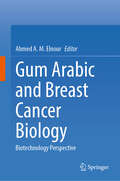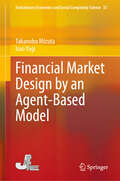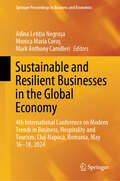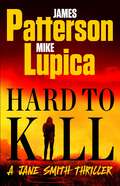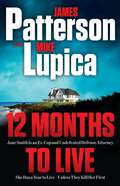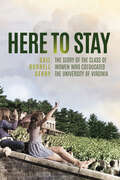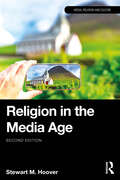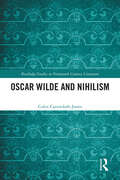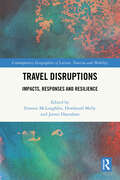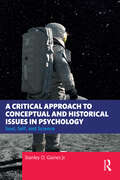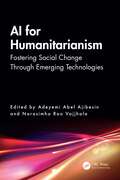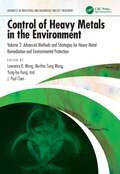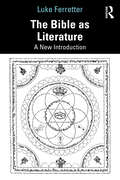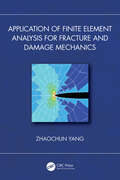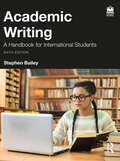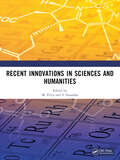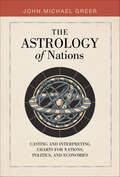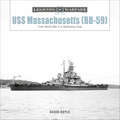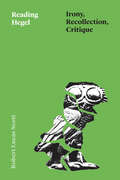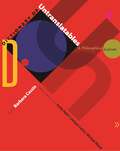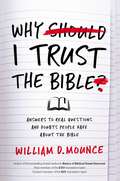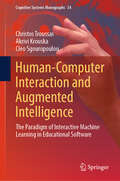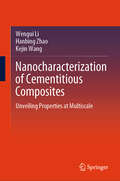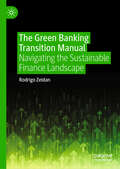- Table View
- List View
Gum Arabic and Breast Cancer Biology: Biotechnology Perspective
by Ahmed A. M. ElnourThis book delves into the intersection of gum arabic, a natural product derived from Acacia gums (AGs) including Acacia sengal, Acacia seyal and Acacia polyacantha gum, and breast cancer (BC)biology from a biotechnology perspective. It explores the history, extraction, characterization, and biological applications of secondary metabolites (SMs) extracted from AGs. The chapters cover topics such as the physicochemical properties of AGs, advanced extraction methods for secondary metabolites, and their diverse biological applications, including antimicrobial, anti-inflammatory, and anticancer properties. The book also examines state-of-the-art breast cancer research, its impact on sustainable development goals, and the potential applications of AG's secondary metabolites in BC cell lines. Additionally, it discusses the opportunity to transfer cancer-on-a-chip technology to Islamic Development Bank member countries (IsDB-MCs) and explores the application of breast-on-a-chip technology using AGs-secondary metabolites (SME). This comprehensive book combines the fields of biotechnology, breast cancer biology, and natural product research, offering a unique perspective on the potential role of gum Arabic or AGs secondary metabolites in breast cancer research and treatment. Researchers in the fields of biotechnology, oncology, and natural product chemistry find this book invaluable. Whether you are exploring new frontiers in cancer treatment or a practitioner seeking novel therapeutic approaches, this book provides critical insights into innovative strategies for combating breast cancer. Additionally, it serves as an essential resource for policymakers interested in integrating development goals with healthcare advancements.
Financial Market Design by an Agent-Based Model (Evolutionary Economics and Social Complexity Science #33)
by Takanobu Mizuta Isao YagiThis is the first book to focus on designing a financial market that works well, and that includes making and/or modulating detailed regulations and/or rules, by a computer simulation of an agent-based artificial financial market model (ABAFMM). The design of a financial market is very important for the development and maintenance of an advanced economy, but designing it is not easy because changes in detailed rules, even those that seem trivial, sometimes have unexpectedly large impacts and side effects in a financial market, which is a complex system. Traditional economics cannot treat a financial market as a complex system in which micro–macro interaction and feedback loops have played essential roles, because traditional economics can only treat macrophenomena and micro processes separately. ABAFMM can do it, however. This book explains, first, why ABAFMMs are needed to design financial markets and which models have good features. Following that explanation, the book discusses how to build the models. Then, cases of recent studies and their contributions are shown, and finally, the difficulties of researchers in this field are considered. This book is expected to facilitate the design of more ABAFMMs to contribute to creating financial markets that will further develop and maintain advanced economies.
Sustainable and Resilient Businesses in the Global Economy: 4th International Conference on Modern Trends in Business, Hospitality and Tourism, Cluj-Napoca, Romania, May 16–18, 2024 (Springer Proceedings in Business and Economics)
by Mark Anthony Camilleri Adina Letiția Negrușa Monica Maria CoroşThis book explores the latest trends, challenges, and opportunities shaping the business, hospitality, and tourism sectors, with a special focus on Eastern Europe. It presents a collection of thought-provoking papers from the 2024 Modern Trends in Business, Hospitality, and Tourism International Conference, held in Cluj-Napoca, Romania. Key topics include the evolution of global capital markets and investment strategies in the post-COVID-19 era, innovative and sustainable business models, alternative financing solutions for SMEs, corporate governance reforms, and the future of human capital leadership. Each chapter offers fresh perspectives on building resilient businesses in an increasingly interconnected global economy. Ideal for academics, researchers, industry experts, and practitioners, this book provides valuable insights and practical solutions for fostering sustainable growth and resilience in today’s dynamic business environment.
Hard to Kill: A Jane Smith Thriller (A Jane Smith Thriller #2)
by James Patterson Mike LupicaInstant New York Times Bestseller! &“With Jane Smith, Alex Cross has reason to be jealous&” (Good Morning America). Hard to Kill features James Patterson&’s greatest character yet–a tough-as-nails attorney up against a relentless killer. Attorney Jane Smith is mounting an impossible criminal defense. Her client, Rob Jacobson, is the unluckiest of the unlucky. No sooner is he accused of killing a family of three in the Hamptons than a second family is gunned down. It&’s not double jeopardy. It&’s not double murder. It&’s double triple homicide. Jane&’s career has spanned from NYPD beat cop to Hamptons courtroom. She&’s tough to beat. She&’s even tougher to kill. The defense may never rest.
12 Months to Live: A Jane Smith Thriller (A Jane Smith Thriller #1)
by James Patterson Mike Lupica&“Patterson and Lupica make a great team&” (Carl Hiaasen) who get &“deep into the lives of strong women&” (Louise Penny) and Jane Smith is their greatest creation—a badass lawyer with a year to live. &“Jane Smith is the best character we&’ve ever created. Bar none.&” —James Patterson and Mike Lupica Tough-as-nails criminal defense attorney Jane Smith is hip-deep in the murder trial of the century. Actually, her charmless client might&’ve committed several murders. She&’s also fallen in love with a wonderful guy. And an equally wonderful dog, a mutt. But Jane doesn&’t have much time. She&’s just received a terminal diagnosis giving her twelve months. Unless she&’s murdered before her expiration date.
Here to Stay: The Story of the Class of Women Who Coeducated the University of Virginia
by Gail Burrell GerryReflecting on the legacy of the first class of undergraduate women at UVA The campaign to secure unfettered access to higher education for women took decades of activism and advocacy, and mainstream skepticism over the viability of coeducation persisted until shockingly recently. Many august institutions dragged their feet until the passage of Title IX codified equal access to higher education. The University of Virginia was the last public university in the United States to admit women; the first class of female undergraduates at Jefferson&’s University received their diplomas only in 1974. Written by a member of that historic class and rich with vivid details and anecdotes, Here to Stay describes the challenges they faced and the trail they blazed at a university that proudly advertised itself as a school for &“Virginia gentlemen.&” Drawing on a wide array of sources, Gail Burrell Gerry documents how UVA prepared for the women&’s arrival and explores what their status as trailblazers meant at the time, what it has meant to them since, and their legacy at UVA today. In addition to chronicling Gerry&’s experiences as part of the class of &’74, Here to Stay is a compelling account of all the 367 women who found themselves on the front lines of landmark institutional and social change—and the thousands more like them throughout the country—relating how they made their mark on a bastion of tradition and entrenched male privilege.
Religion in the Media Age (Media, Religion and Culture)
by Stewart M. HooverLooking at the everyday interaction of religion and media in our cultural lives, Hoover’s book is a fascinating assessment of the state of modern religion. This revised second edition now looks at the digital age, "new media" and the significant role of social media on religion today. While the sheer volume and variety of information traveling through global media changes modes of religious thought and commitment, the human desire for spirituality also invigorates popular culture itself, recreating commodities – film blockbusters, world sport, politics, and popular music – as contexts for religious meanings.Drawing on research into household media consumption, Hoover charts the way in which media and religion have continued to intermingle and collide in the cultural experience of media audiences. This second edition of Religion in the Media Age is essential reading for everyone interested in how today's mass media relates to contemporary religious and spiritual life.
Oscar Wilde and Nihilism (Routledge Studies in Nineteenth Century Literature)
by Colin Cavendish-JonesOscar Wilde and Nihilism examines Wilde’s major works in the context of nineteenth-century philosophical nihilism and the Victorian religious unsettlement. The book covers Wilde’s plays, the fairy tales, The Picture of Dorian Gray, the critical writings, and De Profundis to show how Wilde’s thinking about nihilism developed over the course of his career, profoundly influencing the tone and message of his work. Like Nietzsche, Wilde came to regard art as the only effective counterforce to the problem of nihilism, a uniquely consistent source of order and meaning in a godless universe. The book is intended for the general reader with an interest in nihilism, aesthetics, or Wilde, as well as for more specialist scholars. The aim is to provide the reader with the answers of an exceptionally brilliant and original intellect to the most compelling problem in philosophy: how to find meaning and purpose in life.
Travel Disruptions: Impacts, Responses and Resilience (Contemporary Geographies of Leisure, Tourism and Mobility)
by James Hanrahan Emmet McLoughlin Domhnall MellyThis timely and pivotal volume explores the nexus of a wide range of travel disruptions and their multifaceted implications on the global travel and tourism industry.As the global travel and tourism industry struggles with an increasingly unpredictable landscape marked by natural disasters, health crises, geopolitical upheavals, and societal transformations, comprehensive insights and practical strategies are needed to help navigate these challenges. Comprising 13 specifically commissioned chapters authored by global experts in the field, this insightful and richly illustrated book therefore explores the interplay of unique factors influencing travel behaviour, policy responses, and the industry’s overall resilience. With a multidisciplinary focus and international case studies throughout, the book examines innovative strategies for building resilience, post-disruption recovery mechanisms, and crisis communication protocols, as well as exploring the various social, cultural, and ethical implications often linked with economic growth and cultural preservation. It provides a global understanding of the ever-evolving landscape of travel disruptions, the psychological nuances that tend to guide traveller choices and a comprehensive assessment of policy responses, governance strategies, and stakeholder collaborations that aim to strengthen resilience in the industry, thus helping to ensure sustainable growth in the future.This book is a pivotal resource for academics, researchers, industry professionals, and policymakers concerned with the ever-evolving nature of travel and tourism, going beyond theoretical discourse.
A Critical Approach to Conceptual and Historical Issues in Psychology: Soul, Self, and Science
by Stanley O. Gaines, Jr.A Critical Approach to Conceptual and Historical Issues in Psychology: Soul, Self, and Science examines the evolving concept of human consciousness throughout the ages to show how humanity progressed from ‘studies of the soul’ – a major concern of ancient philosophy – to a science of the mind including the self – a primary concern of contemporary psychology.Divided into five parts, the book moves through the history of psychology from its philosophical roots into the present day and beyond. It takes a balanced and critical approach to figures and theories which have been instrumental in the development of psychology as a discipline, such as Plato, Descartes, Wundt, Du Bois, Freud, Jung, Watson, Skinner, and Maslow. Throughout, it offers diverse perspectives on the field’s history, providing insights into such topics as race and intelligence, gender and personality, and their treatment within psychology. Each chapter is supported by breakout boxes highlighting key theories related to that chapter’s topic. Thought questions, to encourage the reader to critically evaluate what they have read, notes with further information, and suggestions for further reading are provided online.Of particular interest to postgraduate students on MSc conversion courses, the book will also interest undergraduate students completing history of psychology, conceptual and historical issues in psychology, history and systems of psychology, and related modules. This textbook was designed to comply with the QAA Subject Benchmark Statement in Psychology and the BPS accreditation guidelines for content in Conceptual and Historical Issues in Psychology
AI for Humanitarianism: Fostering Social Change Through Emerging Technologies
by Pooja Sharma Christian Kaunert Manju Khari Bhupinder Singh Narasimha Rao Vajjhala Anjana Sharma Adeyemi Abel Ajibesin Bashir Eseyin Abdullahi Taiwo Abiodun Jyoti Batra Murat Tahir Çaldağ Eriona Çela Neelatphal Chanda Philip Eappen Azubuike Erike Tarcízio Ferrão Ebru Gökalp Ishayu Gupta Radha Srinivasan Iyer Yusuf Kabir Kasum Munir Maharazu Kubau Devender Kumar Bashir Malgwi Yusuf Mshelia Yerzhan B. Mukashev Emeka Ogbuju Francisca Oladipo Edoghogho Olaye Bamidele Oluwade Rajasekhara Mouly Potluri Babatunde Dauda Raheem Md Mahfujur Rahman Santhosh Kumar Rajamani Selene Roldán Ruiz Arturo Roman Cesar Sanjuan Hussein Umar Samuel C. Avemaria Utulu Ayush Verma Abraham ZirraThis book explores the transformative potential of artificial intelligence (AI) in addressing critical humanitarian challenges. It examines AI’s role in enhancing emergency responses, poverty alleviation, and healthcare.Chapters authored by a diverse group of international contributors cover topics such as AI’s application in disease prediction, ethical AI practices, and innovative resource distribution. This book uniquely blends theoretical insights with practical case studies, providing a road map for leveraging AI in humanitarian efforts. Readers will benefit from detailed explorations of AI’s capabilities and challenges, gaining insights into how AI can drive social change and improve global humanitarian outcomes.Targeted at policymakers, researchers, practitioners, and anyone interested in the intersection of AI and humanitarianism, this book offers valuable perspectives on ensuring AI technologies are both advanced and ethically sound.
Control of Heavy Metals in the Environment: Advanced Methods and Strategies for Heavy Metal Remediation and Environmental Protection (Advances in Industrial and Hazardous Wastes Treatment)
by Lawrence K. Wang Yung-Tse Hung Wang, Mu-Hao Sung J. Paul ChenOffering broad coverage of advanced principals and applications, Control of Heavy Metals in the Environment mini series provides chemical and environmental engineers with the most complete resource available on the remediation of heavy metal contaminants with an emphasis on advanced and alternative approaches. It investigates a variety of environmental pollution sources and waste characteristics that require a multitude of remediation methods. It then details the latest in clean-tech advances including fungal bioprocesses, and addresses recycling and disposal techniques, as well as metals pollution from the transportation industry. The authors delve into costs and effluent standards and offer several illustrative case histories to illustrate the regional and global effects of key pollution control practices.Features: Provides technical information for industrial and hazardous waste treatment. Discusses the control, treatment, and management of metal emissions from motor vehicles. Explores the newest methods of clean production and waste minimization. Includes numerous figures, tables, examples, and case histories.
The Bible as Literature: A New Introduction
by Luke FerretterThis book introduces the Bible as one of the greatest works of world literature. Luke Ferretter provides a comprehensive history of the field, alongside detailed readings of the texts of the Bible and the most influential theories in the area.The Bible as Literature: A New Introduction is divided into groups of texts in the Bible by genre – the Pentateuch; the histories; the poetry; the Wisdom literature; prophecy; the Gospels; the letters; and apocalyptic writing – reflecting the majority of courses. Organized into three sections, each chapter begins with a clear introduction to current theories around who wrote and edited each Biblical book. Ferretter then offers detailed and original literary criticism of that book, encouraging readers to pursue similar literary criticism of the Bible themselves. The final section in each chapter discusses a text related to each Biblical book. These texts include visual, musical, poetic, fictional, philosophical, theological, and psychological works. Throughout the guidebook, there are also useful text boxes and discussion questions, which contextualize examples and enrich students’ understanding. This engaging and accessible introduction reveals the Bible’s significance both as literature and for literary study in light of current Biblical scholarship. It is essential reading for students and scholars of literature, Biblical studies, and cultural studies.
Application of Finite Element Analysis for Fracture and Damage Mechanics
by Zhaochun YangApplication of Finite Element Analysis for Fracture and Damage Mechanics focuses on the finite element analysis of various material models and their relevant fracture and damage models using this advanced software. The book consists of three parts: Part I introduces the various material models, Part II highlights the finite element modeling of their relevant fracture parameters, and Part III deals with various material damage models. Each part begins with a simple problem with theoretical results compared with finite element results to help readers understand the numerical simulation results. Discusses material models such as composite, elastic, elastoplastic, and creep models Covers fracture parameters like K, J, C*, and VCCT Presents relevant material damage models (ductile, creep, and composite) Explores typical and complex problems, including the inclined crack model, penny shaped crack model, compact tension specimen, end-loaded split (ELS) model, double cantilever beam (DCB) model, and notched model Includes all modeling files, such as APDL input files, Python code and creep damage subroutine, in the appendixes Written for materials and mechanical engineers, this text addresses and provides solutions to the real-life engineering challenge of damage and fracture in materials and structures.
Academic Writing: A Handbook for International Students
by Stephen BaileyThe new sixth edition of this popular book has been written to help international students succeed in writing essays and reports for their English-language academic courses. Thoroughly revised and updated in a streamlined format making it even easier for students and teachers to use, Academic Writing: A Handbook for International Students is designed to let readers find the support they need easily, both in the classroom and for self-study.The book consists of three parts, comprising a total of 28 units: The Writing Process and Writing Skills; Elements of Writing; and Writing Models. The first part explains and practises every stage of essay writing, from choosing the best sources, reading and note-making, through to referencing and proofreading. These stages are supported by relevant explanations of critical writing skills, so that, for instance, finding synonyms is linked with paraphrasing and summarising. The second part explains critical issues such as using numbers and punctuation, and is organised alphabetically, while the third part provides models for common components of student writing such as case studies and reports. All units are fully cross-referenced and can be taught in conjunction with each other or used for self-study or reference. A progress check at the end of each part allows students to self-assess their learning, and a complete set of answers to the practice exercises is included.Additional features of the book include: Use of authentic academic texts from a wide range of disciplines Designed for self-study as well as classroom use Useful at both undergraduate and postgraduate level Fully updated, with sections on using AI and exploring electronic sources Access to the free interactive website which includes a full set of teaching notes as well as more challenging exercises, revision material and links to other sources. All international students wanting to maximise their academic potential will find this practical and easy-to-use book an invaluable guide to writing in English for their degree courses.
Recent Innovations in Sciences and Humanities
by S. Anand M. Rishabha Priya V. Anandan H. Mary Henrietta S. VaralakshmiThe Conference covered a wide range of themes in various disciplines. In the field of English, the conference focused on digital tools in teaching and learning, the use of AI in language teaching and learning, literature in English language teaching, teacher training, and professional development, as well as linguistic competence in English language teachers.For those interested in mathematics, the conference explored topics such as computational methods for linear and non-linear optimization, mathematical models for computer science, numerical analysis, boundary value problems, real and complex analysis, probability and statistics, fluid dynamics, sequence spaces, mathematics education, applied mathematics, differential equations, and game theory.In the field of physics, the conference delved into materials science and engineering, functional materials, computational materials science, nanomaterials and nanotechnology, structural materials, photonic materials engineering, biomaterials, biomechanics, and biosensors.Lastly, in the field of chemistry, the conference discussed materials chemistry, composite, coating, and ceramic materials, soft matter and nanoscale materials, energy systems, and materials, functional thin-film materials, nanostructures and nanofilms, polymers and biopolymers, as well as surface science and engineering.
The Astrology of Nations: Casting and Interpreting Charts for Nations, Politics, and Economies
by John Michael GreerThe Astrology of Nations explores the little-understood art of mundane astrology—making predictions about the political and economic condition of nations on the basis of planetary movements. Mundane charts are cast in the same way as natal charts, but their delineation—that is, the analysis of factors and their synthesis into a complete picture—follows different rules. Suitable for astrology students of every level, this complete guide: • Takes readers from initial theory to practice; • Explores the planetary meanings, houses, and aspects as specific to mundane astrology; • Discusses historical case studies for major planetary happenings and political events; and • Teaches readers how to cast and interpret mundane charts for insights on past, present, and future political events. The practices of mundane astrology span back through five thousand years of human history and insight. With The Astrology of Nations, discover more about this fascinating practice and how the stars will continue to influence nations and politics today and beyond.
Doors of Venice: Views of a Vanishing City
by Greg MillerA visit to Venice, a city with no cars, allows you to envision yourself back in time several hundred years ago, with traces of the City of Canals' storied history on display wherever you look. However, the future of Venice is uncertain due to rising sea levels and overtourism. During a rare moment when tourism lulled due to the pandemic, photographer Greg Miller took advantage of the Venice's quiet streets to capture images that go beyond the expected views of the floating city. Miller's long-exposure images focus on Venice's doors, uncovering the stories they reveal about the city's past residents and its vanishing culture. Readers can luxuriate in the intricate details of the centuries-old doors that are captured on these pages. From the quality of the wood, to the patinas and colors, to the antique hardware and ornate architectural components, the wonders of these portals to the past are on full display. But, due to Venice's contemporary challenges, the doors themselves are under threat. As native Venetians leave the city and homes are rapidly purchased by corporate entities, these architectural gems risk being replaced or modified for cost-effective maintenance. This book serves as a visual preservation of these historical portals, providing a chance to appreciate their beauty and significance before they potentially disappear forever.
USS Massachusetts (BB-59): From World War II to Battleship Cove
by David DoyleThe USS Massachusetts is a fast battleship that fought in some of the key naval battles of WWII, including Casablanca, the Philippines, and Okinawa
Reading Hegel: Irony, Recollection, Critique (Thinking Literature)
by Robert Lucas ScottRetrieves Hegelian speculative experience for literary theory. The relationship between Hegel and literary theory has for a long time been both contested and paradoxical. On the one hand, “theory” is often skeptical of all that Hegel ostensibly stood for: idealism, systematicity, and identity at the expense of difference. Yet, in spite of itself, literary theory is taken to owe a profound debt to Hegel’s philosophy. Robert Lucas Scott’s book complicates this account and argues that literary theory has made the mistake of abstracting Hegel’s thought from its more dynamic presentation in Hegel’s writings, reducing “Hegel” to a series of propositions or positions. Literary theory, Scott argues, misses what is perhaps the greatest innovation of Hegel’s philosophy: a presentation of experience that begins precisely by setting aside all preconceptions or prior assumptions. It is on this point that Hegel’s philosophy itself approaches literature: its content cannot be simply abstracted from the singular experience of reading it. Only through a mode of reading alive to speculative experience can literary theory become truly Hegelian. Scott’s exposition of Hegel offers a model of reading with relevance beyond philosophy: one that is critical without pretensions of mastery and detachment and that honors the singularity of the reading experience without succumbing to the subjectivism of the “postcritical.” The book also includes engagements with the work of Luther, Kant, Marx, Gillian Rose, Fredric Jameson, Robert Brandom, Catherine Malabou, and more in its recovery of Hegel’s thought for a critical understanding of our time.
Dictionary of Untranslatables: A Philosophical Lexicon (Translation/Transnation #35)
by Barbara CassinCharacters in some languages, particularly Hebrew and Arabic, may not display properly due to device limitations. Transliterations of terms appear before the representations in foreign characters.This is an encyclopedic dictionary of close to 400 important philosophical, literary, and political terms and concepts that defy easy—or any—translation from one language and culture to another. Drawn from more than a dozen languages, terms such as Dasein (German), pravda (Russian), saudade (Portuguese), and stato (Italian) are thoroughly examined in all their cross-linguistic and cross-cultural complexities. Spanning the classical, medieval, early modern, modern, and contemporary periods, these are terms that influence thinking across the humanities. The entries, written by more than 150 distinguished scholars, describe the origins and meanings of each term, the history and context of its usage, its translations into other languages, and its use in notable texts. The dictionary also includes essays on the special characteristics of particular languages--English, French, German, Greek, Italian, Portuguese, Russian, and Spanish.Originally published in French, this one-of-a-kind reference work is now available in English for the first time, with new contributions from Judith Butler, Daniel Heller-Roazen, Ben Kafka, Kevin McLaughlin, Kenneth Reinhard, Stella Sandford, Gayatri Chakravorty Spivak, Jane Tylus, Anthony Vidler, Susan Wolfson, Robert J. C. Young, and many more.The result is an invaluable reference for students, scholars, and general readers interested in the multilingual lives of some of our most influential words and ideas.Covers close to 400 important philosophical, literary, and political terms that defy easy translation between languages and culturesIncludes terms from more than a dozen languagesEntries written by more than 150 distinguished thinkersAvailable in English for the first time, with new contributions by Judith Butler, Daniel Heller-Roazen, Ben Kafka, Kevin McLaughlin, Kenneth Reinhard, Stella Sandford, Gayatri Chakravorty Spivak, Jane Tylus, Anthony Vidler, Susan Wolfson, Robert J. C. Young, and many moreContains extensive cross-references and bibliographiesAn invaluable resource for students and scholars across the humanities
Why I Trust the Bible: Answers to Real Questions and Doubts People Have about the Bible
by William D. MounceA Clear Guide to Help Readers Understand Why They Can Trust the BibleWe are often told we can no longer assume that the Bible is trustworthy. From social media memes to popular scholarship, so many attacks have been launched on the believability of Scripture that many have serious questions about the Bible, such as:Did Jesus actually live?Did the biblical writers invent their message?How can we trust the gospels since they were written so long after Jesus lived?How can we believe a Bible that is full of internal contradictions with itself and external contradictions with science?Aren't the biblical manuscripts we have just copies of copies that are so corrupted they don't represent what the original authors wrote?Why should we believe the books that are in the Bible, since many good ones were left out, like the Gospel of Thomas?Why trust the Bible when there are so many contradictory translations of it?If you find yourself unable to answer questions such as these, but wanting to, Why I Trust the Bible by eminent Bible scholar and translator William Mounce is for you. These questions and more are discussed and answered in a reasoned, definitive, and winsome way.The truth is that the Bible is better attested and more defensible today than it ever has been. Questions about the Bible are perhaps the most significant challenge confronting Christian faith today, but they can be answered well and in a way which will lead to a deeper appreciation for the truth and ongoing relevance of the Bible.
Human-Computer Interaction and Augmented Intelligence: The Paradigm of Interactive Machine Learning in Educational Software (Cognitive Systems Monographs #34)
by Christos Troussas Akrivi Krouska Cleo SgouropoulouThis book explores the transformative roles of human-computer interaction (HCI) and augmented intelligence (AI) in shaping intelligent systems. HCI focuses on designing interactive systems that enhance human-technology relationships, while AI empowers users with adaptive, data-driven tools that complement decision-making. Together, these fields drive innovation, creating systems that are efficient, intuitive, and inclusive, addressing diverse user needs across various domains. Central to this work is the paradigm of interactive machine learning (IML), which builds on HCI and AI principles to create adaptive systems capable of evolving in real-time. The book highlights the application of IML in educational software, demonstrating how dynamic, personalized, and responsive learning environments can enhance student engagement and success. It provides detailed case studies and practical examples that showcase how IML aligns educational content, feedback, and interactions with learner behaviors and preferences. Additionally, it includes numerous Python code implementations and actionable design strategies, making these concepts accessible to practitioners and researchers alike. Key topics include leveraging cognitive and communication styles to shape adaptive systems, integrating learning models to enhance personalization, and addressing ethical considerations such as data privacy and algorithmic fairness. Readers will also discover discussions on creating personalized tutoring systems, collaborative platforms, and immersive environments that redefine educational technology. This book is a valuable resource for researchers, software developers, educators, instructional designers, and technologists at the intersection of human-computer interaction, augmented intelligence, and educational innovation. With its comprehensive framework and practical insights, it offers the tools to design adaptive, inclusive, and impactful learning systems for the future.
Nanocharacterization of Cementitious Composites: Unveiling Properties at Multiscale
by Wengui Li Hanbing Zhao Kejin WangThis book offers a systemic introduction and summarization of nanoscale characterization techniques on cementitious materials. Cementitious composites are ubiquitous in the realm of construction, serving as the backbone of infrastructure worldwide. These materials, typically composed of cement, aggregates, and water, exhibit a complex interplay of mechanical, chemical, and physical properties. In the introductory chapter, we delve into the fundamental aspects of cementitious composites, exploring their composition, structure, and significance in the construction industry. In the second chapter, we introduced the advancements and applications of nano-characterization techniques for cementitious materials including nanoindentation, nanoscratch, modulus mapping, atomic force microscopy-based nanomechanical mapping techniques. Therefore, in the third chapter, the cementitious materials sample surface processing procedure was introduced. In the fourth chapter, nanoindentation, modulus mapping and PeakForce quantitative nanomechanical mapping (PeakForce QNM) test results were comparatively analysed. In chapter five and six, the nanoscale mechanical properties of sodium aluminosilicate hydrate (N-A-S-H) gel in geopolymer paste with and without nanoparticles was evaluated by grid nanoindentation tests. The nano/micromechanical properties of interfacial transition zones in ordinary concrete, recycled aggregate concrete and geopolymer concrete were investigated in chapter seven, eight and nine. Modelled aggregate samples were used to improve efficiency and reduce unnecessary workload in the microscopic characterization. Finally, challenges and future directions were discussed in chapter ten from cementitious sample surface preparation methods, microscopic characterization method for cementitious materials and testing strategies for complicated interfacial transition zones.
The Green Banking Transition Manual: Navigating the Sustainable Finance Landscape
by Rodrigo ZeidanThe Green Banking Transition Manual sets the green banking standard for academic and professional audiences. Dr. Zeidan connects conventional financial indicators with green banking to present the practical case for sustainable finance. His insightful approach demonstrates that assessing environmental indicators is necessary for prudent banking business and not a &‘nice-to-have&’ attachment. This book will soon be the central manual for all involved in green banking and those who want to be involved in the future.
